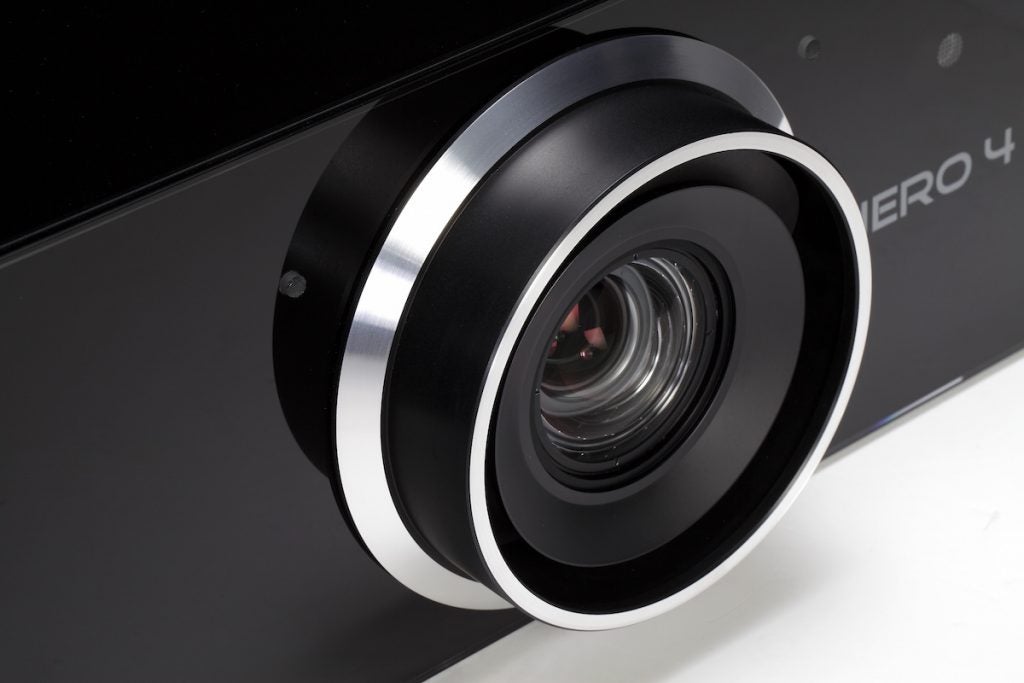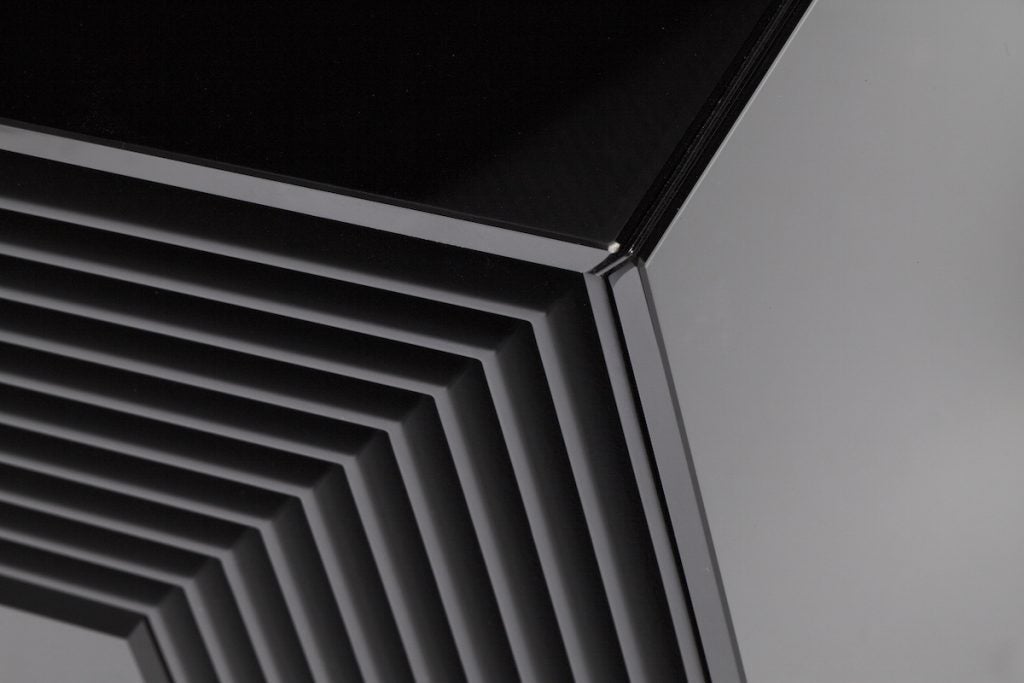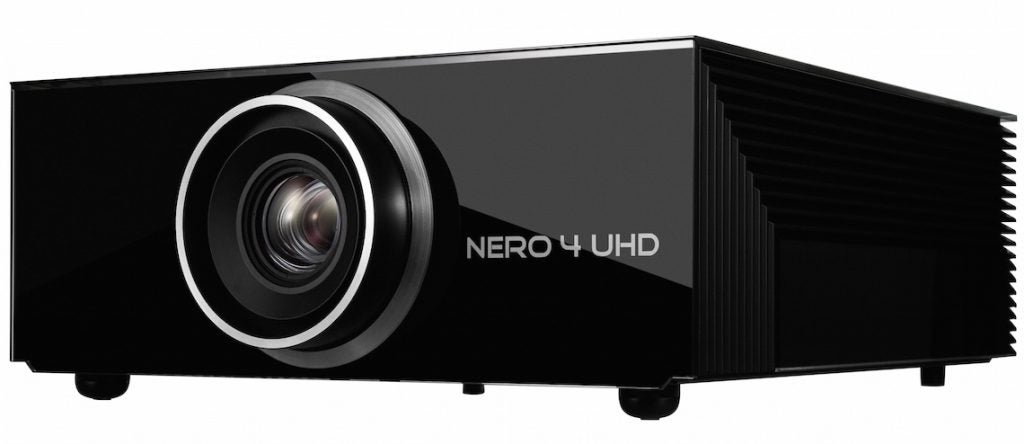Sim2 Nero 4 UHD Review
Sim2 Nero 4 UHD
Proof that HDR and home cinema projection go together?
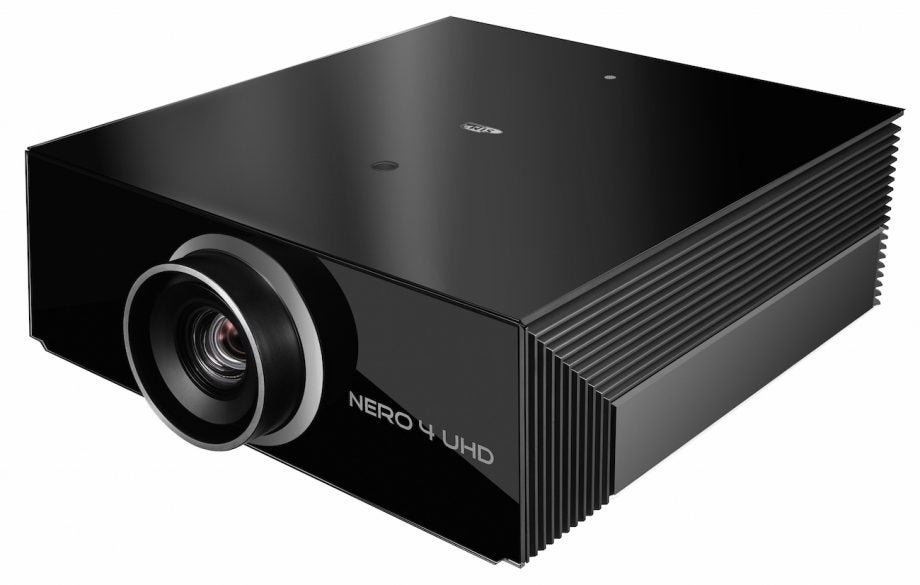
Verdict
Pros
- Beautifully designed
- Outstanding HDR on occasion
- Consistently outstanding SDR pictures
- Isn't actually expensive for such a highly specified projector
Cons
- Evidence of rainbow effect
- Costs far more than most people can afford
- Struggles with the extremes of aggressively mastered HDR
Key Specifications
- Review Price: £29,995
- Single-chip DLP projector
- Native 4K playback
- HDR support (HDR10, HLG via future firmware update)
- 5000 lumens maximum brightness
- Motorised lens adjustments
What is the Sim2 Nero 4 UHD?
The Sim2 Nero 4 UHD is the first projector from the Italian luxury brand to support 4K resolution and HDR (high dynamic range) playback.
This makes it big news in high-end home cinema circles, given Sim2’s previous mastery of the projected image. More so when you consider that the high light output for which the Sim2 projectors are renowned make them the perfect partner for HDR’s hunger for brightness.
The good news is that, on occasion, the Nero 4 UHD delivers on its promise breathtakingly well. The bad news is that even this £30,000 projector fails to get HDR right all the time.
Related: Best projectors
Sim2 Nero 4 UHD – Design and build quality
Sim2 projectors are gorgeous-looking units, and the Nero4 UHD is no different. It doesn’t rock the handsome ‘race car’ curves of some of Sim2’s Giorgio Revoldini-designed projectors, but the way in which the spectacular crystal-glass finish wraps around the Nero 4’s strikingly angular black bodywork is the definition of opulence.
Considering the level of brightness and resolution the Nero 4 UHD delivers, its chassis is surprisingly small. Its 528(w) x 197(h) x 525(d)mm body hung some distance over my projector stand, but it’s hardly the sort of colossus seen elsewhere in the semi-pro and pro projection worlds. However, its 32kg of dead, awkward-to-hold weight shouldn’t be moved single-handed.
The projector’s front edge is dominated by an unusually large but beautifully integrated Nero 4 UHD logo, and a centrally mounted lens. The latter looks both deadly serious and seriously gorgeous thanks to the gleaming silver trim around both the lens edge and mounting aperture.
The only bum note is its remote control. It’s a disappointingly plasticky, dull-looking device, elevated only by its strong button backlighting.
However, the Nero 4 UHD is likely to be part of a fully integrated home cinema system, and so will be handled by high-end controllers from the likes of Crestron.
Sim2 Nero 4 UHD – Setup
Almost all Nero 4s will be professionally installed – but that doesn’t render this section of the review redundant.
It was clear during testing that even experienced Sim2 installers are still learning about the brand’s HDR/4K debutante. So it’s worth mentioning a couple of points here, if only so you can check what your installer is doing.
Strangely, to get the best from the Nero 4 will require adjustment of your 4K Blu-ray player’s picture settings. Even more weirdly, different 4K Blu-ray players require different output settings. With the Oppo 203, for instance, Sim2 recommends that you manually set the player’s colour space to YCC 4:4:4, colour depth to 10 bits, brightness to +8 and contrast to -6. While for the Panasonic UB900 the settings are completely different.
This source adjustment is necessary because, otherwise, the Nero 4 UHD leaves some HDR pictures looking too dark for comfort – despite boasting 5000 nits of brightness.
It isn’t odd for projectors to struggle with the the brightness required for HDR images, but it’s certainly odd to find that the solution doesn’t lie in the projector’s own setup menus, but in those of your source equipment.
Apparently, Sim2 is working on a firmware update to try to resolve some of the Nero 4’s HDR setup issues. It’s certainly an odd situation right now, though, and one that raises questions over the current sophistication of Sim2’s HDR tone-mapping capabilities.
A couple of other settings I’d recommend you try with your installer are reducing the Lens Iris setting to around 4 with HDR viewing to boost black level response – at the cost of reduced brightness peaks and shadow detail, however – and upping the contrast slightly to its 6 or 7 level.
Sim2 Nero 4 UHD – Features
The Nero 4 UHD is built around a single-chip 4K DLP chipset/digital mirror device. It’s illuminated by an ultra-powerful 450W lamp capable of pumping out a huge 5000 ANSI lumens of brightness. Its lens is precise enough to provide a flawless resolution up to 93 lines per millimetre, and Sim2 claims that ‘special coatings’ have been applied to the Nero 4 UHD’s optical components to boost colour performance.
Uniquely for the projector world, the Sim2 Nero 4 UHD can automatically adjust its picture settings for HDR depending on the size of your screen. This is a great move, as the way image size affects brightness and contrast can seriously impact projected HDR performance.
Currently, the Sim2 Nero 4 UHD’s HDR abilities cover just the HDR10 industry standard platform; there’s no HLG, HDR10+ or Dolby Vision support. HLG will come when there’s content that supports it, I’m assured.
HDR10+ and Dolby Vision will not, however. While this is hardly a surprise (no other projectors support these formats, either), it strikes me as particularly unfortunate in the Nero 4’s case. These ‘dynamic’ HDR formats, with their extra scene-by-scene picture information, might really have helped the Sim2 deliver more consistent HDR mastery.
The projector provides two lamp settings, Eco and Bright, and a range of manual lens iris settings. Lamp life is quoted at around 3000 hours, which isn’t huge by today’s standards, but enough to deliver 1500 two-hour films!
Set up is aided by motorised zoom and focus control, plus Allen key-adjusted vertical image shifting. The motorised zoom also enables the Nero 4 UHD to offer a ‘lens memory’ feature, allowing it to adapt to different aspect ratios without the need for any secondary lenses.
One last feature worth mentioning is that the Nero 4 UHD supports 3D playback – although only in the Blu-ray frame sequential format at this time.
Other formats will supposedly be added by future firmware updates. In any case, though, I wasn’t sent any 3D glasses with which I might have evaluated the Nero 4 UHD’s 3D performance.
Sim2 Nero 4 UHD – Picture quality
There are times when the Nero 4 UHD comfortably delivers the best HDR pictures I’ve seen on a home cinema projector. Seriously stunning; the sort of experience you might hope to see at a commercial cinema.
Unfortunately, though, not even £30,000 and 5000 lumens of brightness can completely solve the difficulties of delivering HDR on projectors.
First impressions of the Nero 4 UHD were fair to middling. As usual, I pushed it to its full extent right from the start with a selection of 4K Blu-rays. I was immediately impressed by both the stellar detail and sharpness on show, and the genuine range of light the projector can pump out. Colours, too, combined outstanding richness and punch with superb naturalism.
However, dark scenes looked crushed and lacking in shadow detail. Also, the projector’s black level response was disappointing by Sim2 standards, leaving dark areas looking grey.
It was at this point I discovered the 4K Blu-ray player set-up recommendations. I duly tweaked my Oppo 203 deck, despite concerns that I’d no longer be getting a perfectly accurate 4K Blu-ray output image, and settled down for a second round of viewing. The results were transformative.
Now I was ogling the most potent HDR images I’ve seen on any single – rather than dual – projector system. It was almost as if someone had turned on an extra light inside the Nero 4 UHD.
Daylight exteriors displayed more of that ‘real world’ luminosity and intensity associated with the best HDR pictures. Peak light details, such as sunlight reflecting on metal, looked more pronounced and realistic. Colours exhibited a more life-like intensity and ‘volume’, creating the impression of a wider colour gamut. All this while still looking natural.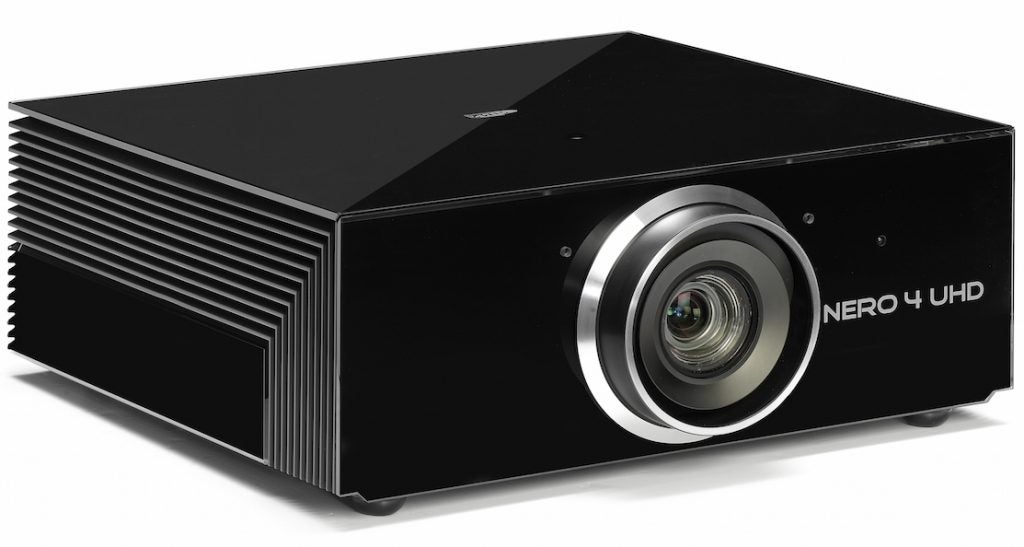
Dark scenes looked much more watchable too, with far greater levels of shadow detail and a sense of punch from any bright highlights that might punctuate the darkness. Having more shadow detail to work with also let me tweak the iris down a point or two from its default value. This improved black level response without leaving dark pictures looking hollow and unrealistic.
Adjusting the Oppo also resulted in far less silhouetting – the common HDR phenomenon where dark image elements appearing against bright backdrops look like mere shadows. In fact, the image’s whole contrast range felt less forced and more immersive.
Post Oppo tweaking, I even felt more aware of the intense 4K detailing that the Nero 4 UHD can deliver. Contrast is a component in perceived resolution, so now that the Nero 4 UHD was delivering punchier brightness peaks, there was a general uptick in my awareness of blades of grass, leaves on trees, grains of sand or dust, and other 4K minutiae for example. Plus, of course, all that extra detail in dark areas I’ve already mentioned.
Having seemingly solved the Nero 4 UHD’s HDR issues, it was easier to appreciate other general strengths about its pictures. It handles motion superbly, for instance. Judder only looks like a natural part of a 24p film presentation, rather than an artefact of the projector’s optics. There’s no hint of processing interference, either. Sim2 does provide a motion processing system, but I saw no reason to deploy it.
There’s also zero evidence of fizzing skin tones during camera pans, or green dotting noise in dark areas –still a common issue with single-chip DLP projectors.
While the Nero 4 UHD looks superb with 4K Blu-ray titles mastered to 1000 nits via the tweaked Oppo 203, feeding it a 4K Blu-ray mastered at 4000 nits – such as Pan or Mad Max: Fury Road – exposes a couple of significant problems.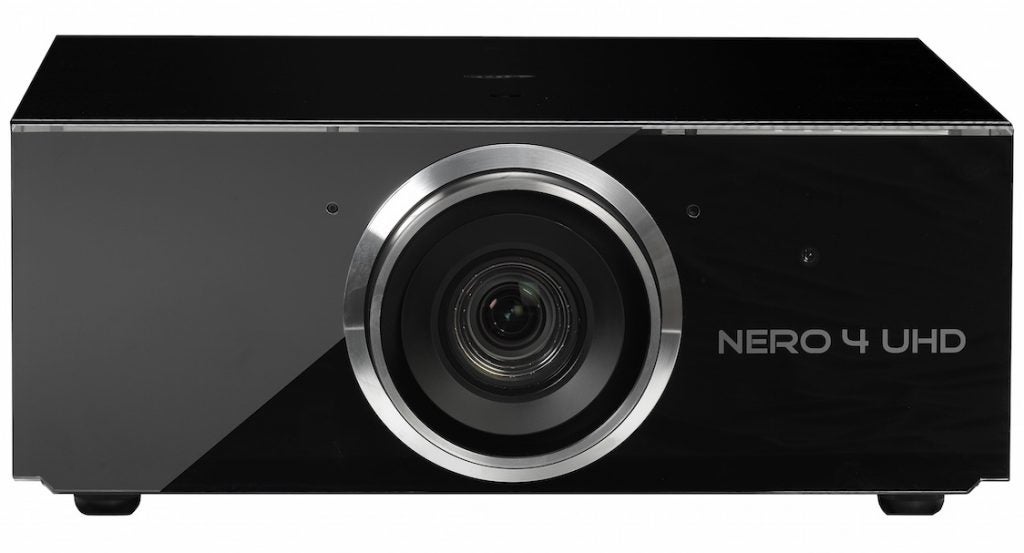
First, peak brightness content is infused with noise, seeming to glow quite unnaturally compared with the rest of the image and suffering with excessive clipping (loss of tonal detailing). For instance, the sun-soaked orange clouds as Peter first arrives in Neverland in Pan stand out quite surreally against the grey clouds behind them. The bright bubbles that float behind him, meanwhile, look fizzy and flared out.
The only way to solve these issues is by reducing the Oppo’s brightness back down to zero. However, the very next sequence of Pan, where the boat ‘sails’ into a dark cave, looked so dark you could barely see what was going on. The only way to get this scene looking watchable again was to push the Oppo’s brightness back to eight…
This suggests two things. First, that even 5000 nits from a projector isn’t enough to do all HDR sources full justice. And second, that Sim2’s tone-mapping management – the way it translates source HDR image data to its own hardware capabilities – isn’t quite there yet. At least when it comes to the more aggressively mastered parts of the HDR world.
Shifting to SDR content via HD Blu-ray, the Nero 4 UHD’s pictures look far better. They’re translated to the projector’s 4K resolution with aplomb, looking beautifully detailed and clean. Those precision optics reveal even the subtlest of colour tone shifts or light tone differences. The projector’s high brightness also gives SDR images greater vibrancy and punch than usual, and drives out subtleties of tone and shade that are normally swallowed up in blackness.
There’s a downside to the Nero 4 UHD’s HDR-friendly brightness, though. Namely that black levels aren’t quite as profound as I remember them being on other Sim2 projectors. Fortunately, reducing the lamp to its Eco output, the iris to 4, and brightness to -1 means that I no longer found the slight residual greyness over dark areas distracting. Especially with so much brightness and vibrancy elsewhere to draw my eye.
The Nero 4 UHD’s high brightness and excellent motion handling make it a potentially spectacular gaming display. However, this potential is slightly undermined by its average input lag measurement of 56ms when using its ‘Sport’ preset. Unfortunately, there’s no gaming preset and the other picture settings increase lag to 100ms.
Dissipating the heat generated by its 450W lamp presents the Nero 4 UHD with a potentially noisy problem. However, while its cooling fans work hard, their noise is smooth and consistent enough to be fairly easy to filter out.
Unfortunately, however, there’s one more problem that affects both SDR and HDR on the Nero 4 UHD – rainbowing. This sees red, green and blue stripes flitting over bright objects, or in your peripheral vision when moving your eyes.
Such rainbowing is pretty common with single-chip DLP projectors. It’s given more emphasis than usual here by the Nero 4 UHD’s extreme brightness, however. As such, it reminds me rather poignantly that Sim2 projectors usually use three DLP chips – something that removes the need for the colour wheel that generates the rainbowing visible in the single-chip Nero 4.
It’s important to stress that awareness/tolerance of rainbowing varies from person to person. Also, using three 4K DLP chips in the Nero 4 would have pushed its price to truly astronomical levels. Nonetheless, having got used to loving Sim2 projectors partly because they don’t suffer rainbowing, seeing the issue on the Nero 4 UHD does come as an unwelcome shock.
Why buy the Sim2 Nero 4 UHD?
With its £30,000 price tag, the Nero 4 UHD clearly isn’t for the financially faint-hearted. Or, more specifically, shallow-walleted. But if you can afford it, should you?
This is a tough call. It makes stunning use of its 4K resolution, and it’s brighter than any other projector in its class – Sony’s laser-based VW5000ES costs almost twice as much. These two skills enable it to deliver the best HDR pictures I’ve seen on a projector – for some of the time.
Unfortunately, even a projector as mighty as this one occasionally comes a cropper at HDR’s demanding hands. And if you’re the sort of person who’s susceptible to seeing DLP’s rainbowing issue, you may want to consider investing your £30,000 elsewhere.
Related: Best TVs
Verdict
It’s great to see Sim2 finally getting to grips with the latest 4K and HDR technologies – but issues make it feel more like a work in progress rather than the finished article.
Trusted Score
Score in detail
-
Value 7
-
Features 9
-
Image Quality 8
-
Design 9
Features
| Native Aspect Ratio | 16:9 |
| Projector Type | Single-chip DLP |
| Brightness (Lumen) | 5000 |
| Full HD 1080p | Yes (actually 4K) |
| 3D Ready | Yes (frame sequential only) |
| Max Diagonal Image Size (Inch) | 300 |
| Lamp Type | UHP |
| Lamp power (Watt) | 450 |
A/V Ports
| HDMI | 3 |
| Component | 1 |
| Ethernet | 1 |
Physical Specifications
| Height (Millimeter) | 197 |
| Width (Millimeter) | 528 |
| Depth (Millimeter) | 525 |
| Weight (Gram) | 32000 |

